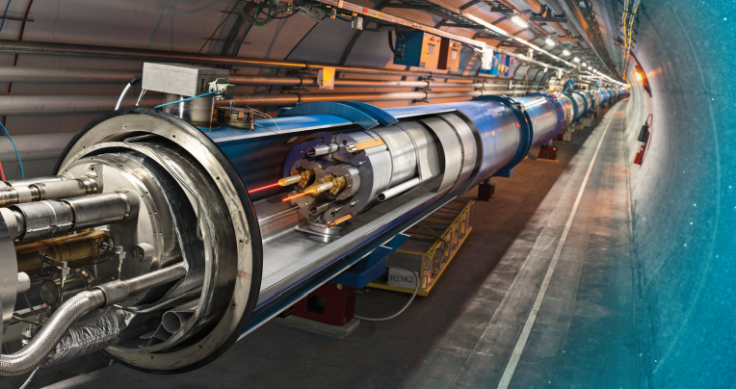CERN LHC Update: Researchers Dial Down Luminosity For ‘Elastic Scattering’ Experiments

The failure to discover a new particle that could have broken the Standard Model of particle physics has not dampened the enthusiasm of researchers at the European Organization for Nuclear Research. Scientists associated with CERN’s Large Hadron Collider (LHC) are now preparing the particle accelerator for a special run — one that would seek to observe and study “elastic scattering” of protons.
The phenomenon occurs when two protons survive their encounter intact — without colliding head-on — with only a slight change in their direction. However, elastic scattering cannot be observed during normal, “high luminosity” LHC runs, when protons are more likely to crash into each other and create new particles.
That is why scientists associated with the TOTEM and ATLAS/ALFA experiments at LHC are now dialing down the luminosity, thereby reducing the chances of head-on collisions and increasing the probability of elastic scattering.
“One of the most fascinating physics goals of TOTEM is to get information on the probability that two protons pass completely through each other without interfering,” CERN said in a statement released Thursday. “This might appear awkward if you think of a proton as a billiard ball, but instead you have to try to imagine the two scattering protons as large ‘galaxies’ (made up inside of tiny moving particles) launched at high speed against each other: there is a finite probability that the two ‘galaxies' will pass through each other without the inner particles interacting significantly.”
Scientists hope that observing this process would provide them vital clues to how quarks are distributed within protons. In addition, the experiments may also tell us what particles within a proton are actually playing a role during elastic scattering.
“Eventually, these type of studies are also useful for understanding the dynamics of cosmic rays – high-energy particles that originate outside the Solar System that, while travelling towards the Earth’s surface, impact with its atmosphere to produce a shower of secondary particles,” CERN said.
While the latest run of the LHC has yielded more precise measurements of processes falling within the ambit of the Standard Model — a framework that describes three of the four known fundamental forces — and has provided observations of the famous Higgs boson at the unprecedented energy of 13 teraelectronvolts, it has drawn a blank insofar as the search for new particles is concerned.
In particular, a tantalizing “bump” in 2015 data at 750 gigaelectronvolts, which had been previously detected by the ATLAS and CMS detectors, did not resurface in the much larger 2016 dataset, suggesting that it was, in all probability, the result of a statistical fluctuation.
© Copyright IBTimes 2025. All rights reserved.






















